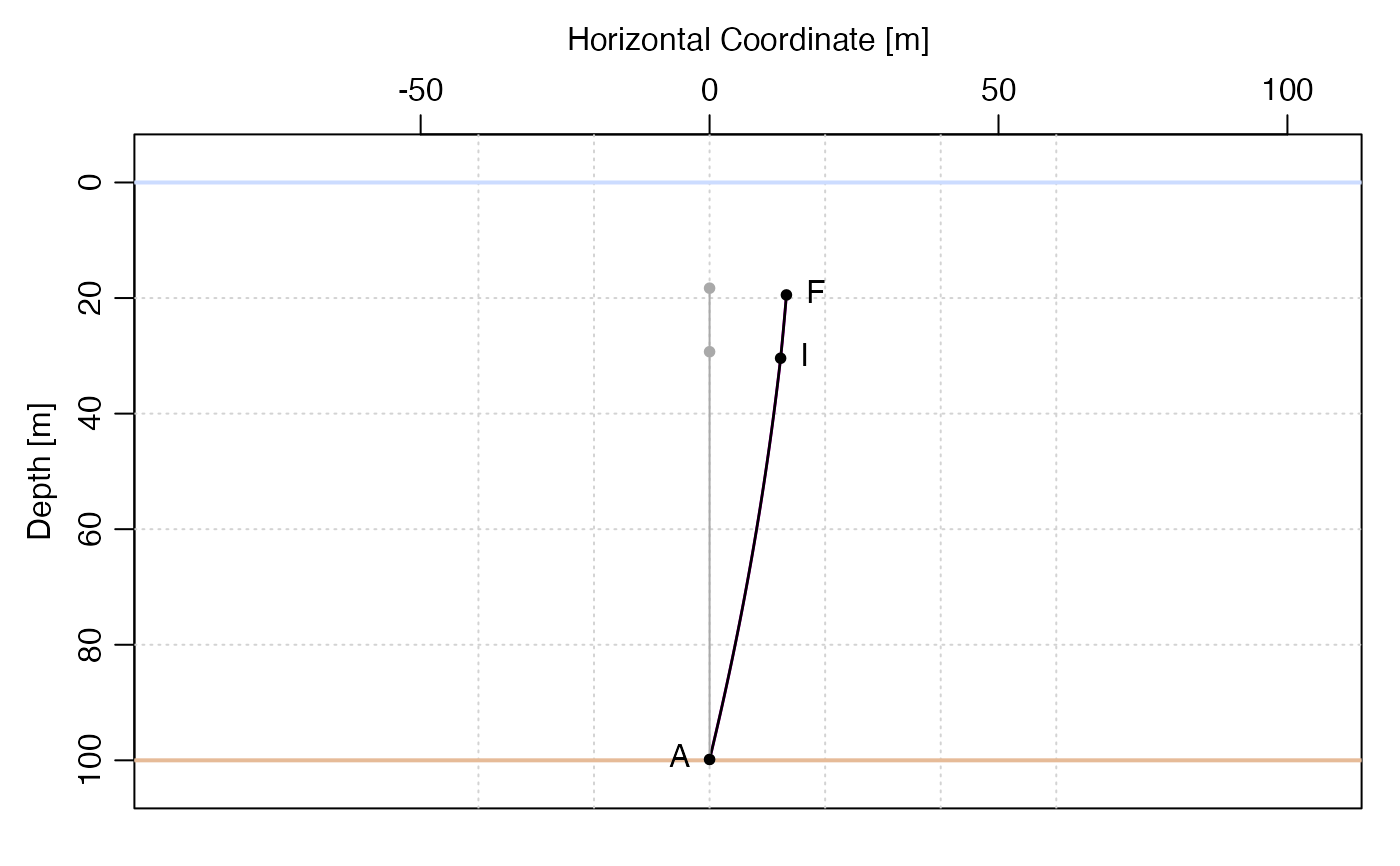Assemble elementary components into a mooring string.
The first argument must be an anchor, created
with anchor(). These are stored in reverse order
in the return value (see Example 1).
mooring(..., waterDepth = NA)Arguments
- ...
two or more elementary objects, as created by
anchor(),release(),chain(),wire(),connector(),instrument(),misc()orfloat().- waterDepth
numerical value giving the full depth of the water column. For a sub-surface mooring, this must exceed the sum of the heights of all the mooring elements.
Value
mooring returns an object in the mooring class that
contains an item named elements, which holds the items provided
in the ... argument. Each of those items is of the
mooringElement class.
Examples
# Example 1: a simple mooring with a single instrument
library(mooring)
m <- mooring(anchor(),
wire(length = 70), instrument(), wire(length = 10),
float(), waterDepth = 100)
ms <- segmentize(m)
msk <- knockdown(ms, u = 1)
plot(msk)
